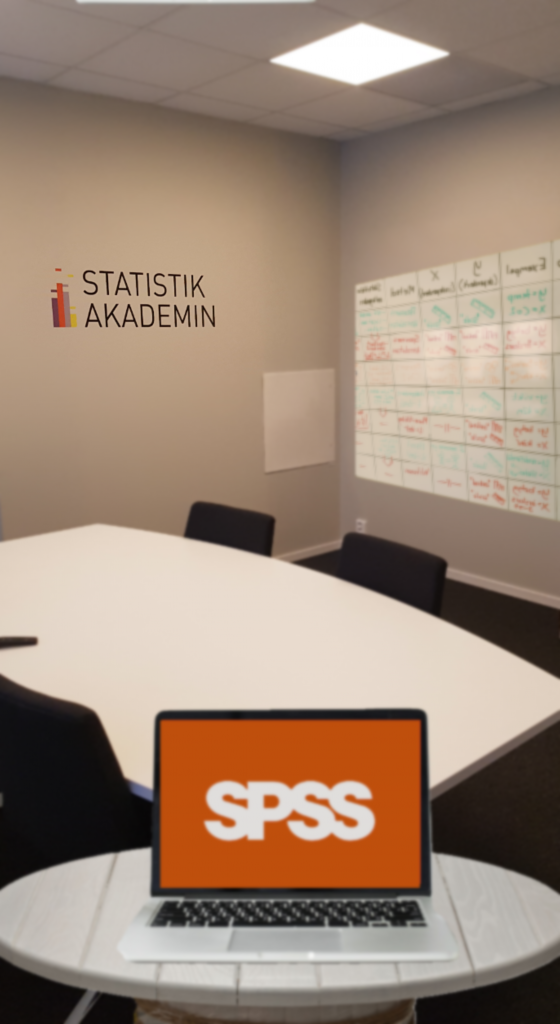Hantera Cookies
För att du ska få en så bra upplevelse som möjligt på webbplatsen använder vi cookies som innebär att vi lagrar och/eller får tillgång till viss information på din enhet så som mobil eller dator.

There is no universal method for statistical analysis that always works. This may seem obvious, but it’s still an important point to keep in mind when starting a new project.
Before beginning data collection, take time in the planning stage to clearly define your objectives.
What do you want to find out?
The answer determines which variables should be collected and how they should be analyzed.
The Importance of Data Quality
In statistics, the saying “Garbage in, garbage out” is particularly true. The outcome of any analysis is entirely dependent on the quality of the data. If the dataset is unreliable or inconsistent, it’s impossible to produce results that are accurate, trustworthy, and relevant to your goals.
In other words, no method or tool can compensate for poor data quality—once the input is flawed, the output will be too.
Common Pitfalls
Many of the most frequent errors can be avoided early in the planning phase with the right knowledge. Statistical pitfalls often occur during data collection, analysis, or interpretation.
A typical example is confusing correlation with causation, such as assuming that ice cream consumption causes drowning accidents.
Sampling errors are another common issue, which can lead to biased results or missing data in surveys. Other pitfalls include unclear definitions of variables, the use of unnecessarily complex methods, or drawing overly broad conclusions from subgroup analyses.
Planning
Effective statistical planning involves clearly defining the study’s goals and hypotheses and selecting appropriate data collection methods. These components should be documented in a Statistical Analysis Plan (SAP), which also specifies data handling procedures and analytical techniques. A well-structured plan ensures that the analysis is meaningful, that the research questions can be answered, and that the work is carried out correctly.
The analysis plan should always be created before the study begins, as it helps prevent common mistakes by defining the analysis methods in advance. Key components include study design, data collection methods, and the analytical techniques to be used.
Planning how the results will be summarized and presented, such as through tables or graphs, is also essential and should be included.
Data Management
Data management covers everything related to collecting, organizing, storing, protecting, maintaining, and using data as a valuable resource throughout its entire life cycle. This includes data strategies, policies, procedures, and tools designed to ensure data quality, integrity, security, and regulatory compliance.
Because analytical results depend entirely on the underlying data, efficient data management greatly increases the likelihood of obtaining accurate, reliable, and meaningful outcomes. In addition, it simplifies compliance with privacy laws and helps maintain data confidentiality.
Graphs and Visualization
Graph management involves creating and refining visual representations of data to make complex information easier to understand. This often includes choosing the right type of chart, adjusting axes and labels, and exporting graphics for use in reports or presentations.
Visualization is a key part of the data management process where raw data is transformed into understandable information. Well-designed graphs make it much easier to identify trends, patterns, and relationships, and to communicate results effectively to others.
Power Analysis
Statistical power refers to the probability that a study will detect a true difference between groups.
Power analysis, or power calculation, is used during the planning stage to determine how large the sample size needs to be for the study to produce meaningful results.
The principle is simple: compare a control group to an experimental group that receives some form of treatment. If the difference between them is large enough, we can reasonably conclude that the treatment had an effect.
Conducting a power analysis in advance ensures that your study is feasible and statistically robust.
Statistical Analysis
Ultimately, statistical analysis is about describing data and drawing valid conclusions from it.
The data may come from observations, measurements, or other forms of collection from the real world. To conduct your own analyses, you need to understand fundamental concepts such as hypothesis testing, p-values, and confidence intervals, all of which form the foundation of statistical inference.
Knowledge of basic methods such as correlation, t-tests, and Chi-squared tests is essential for drawing conclusions about larger populations from sample data. More advanced methods include regression, ANOVA, mixed models, and survival analysis.
Don’t Get Stuck – We’re Here to Help
At Statistikakademin, our experts can support you no matter the size or scope of your project.
Whether you need help identifying patterns and trends in a dataset or want full support from study design to final analysis, we are here to assist.
By applying advanced statistical methods, we help you uncover valuable insights and actionable information from your data. Every new assignment begins with an introductory meeting where our statistician reviews your research questions, data collection process, and choice of statistical methods together with you.
Conact us today to schedule a brief consultation with one of our experts!
Fill out the form and we will contact you for a short consultation.